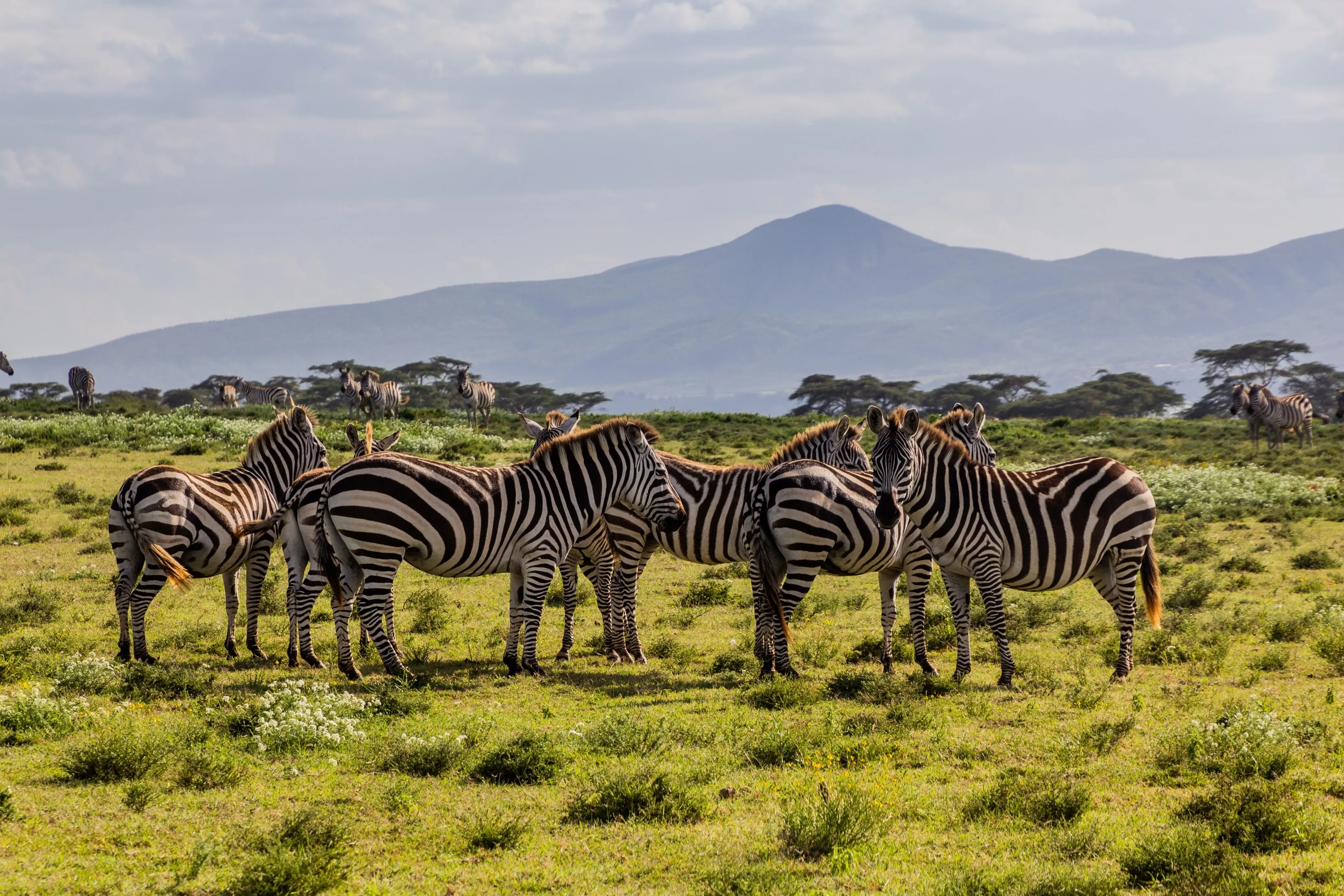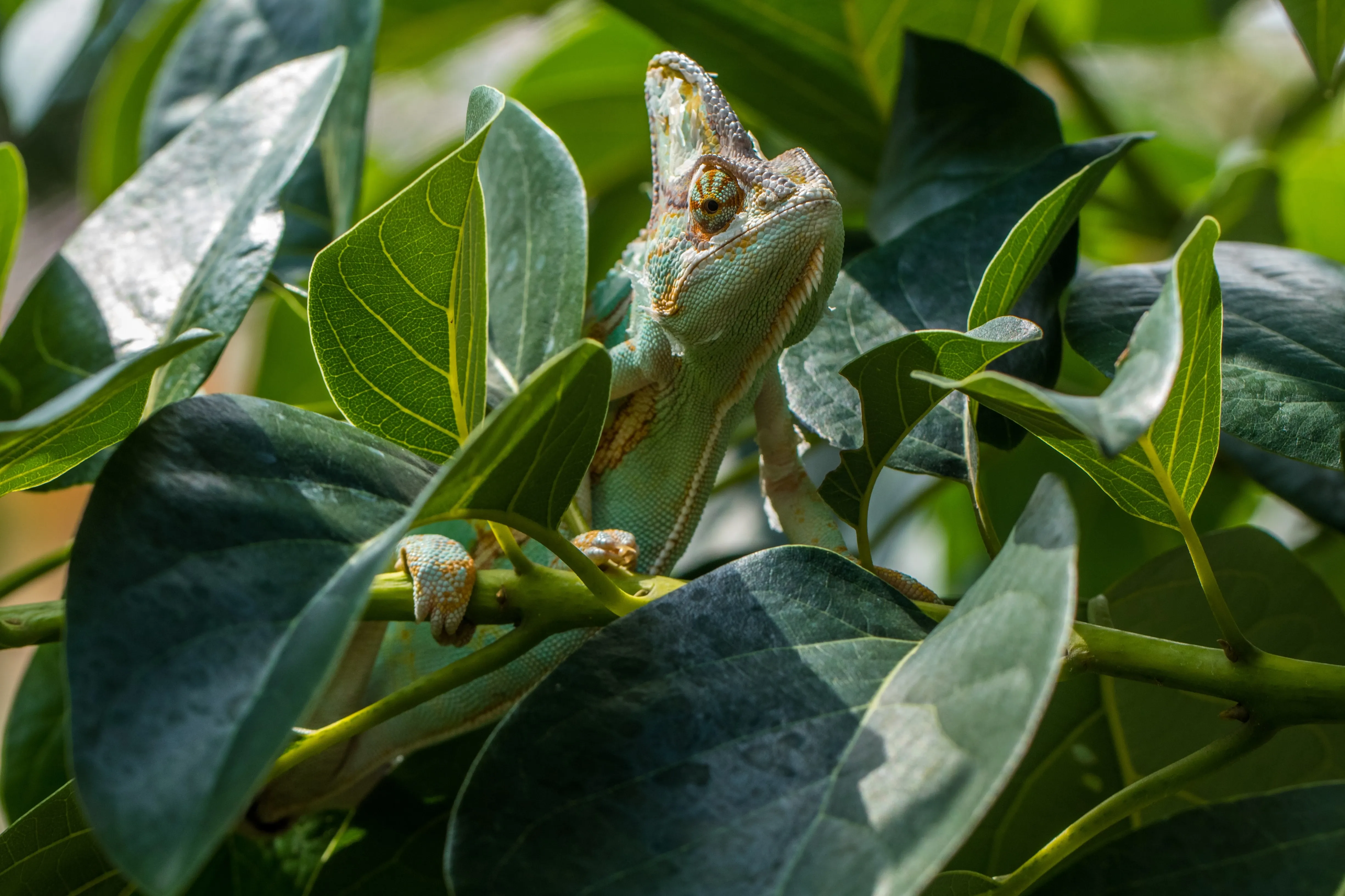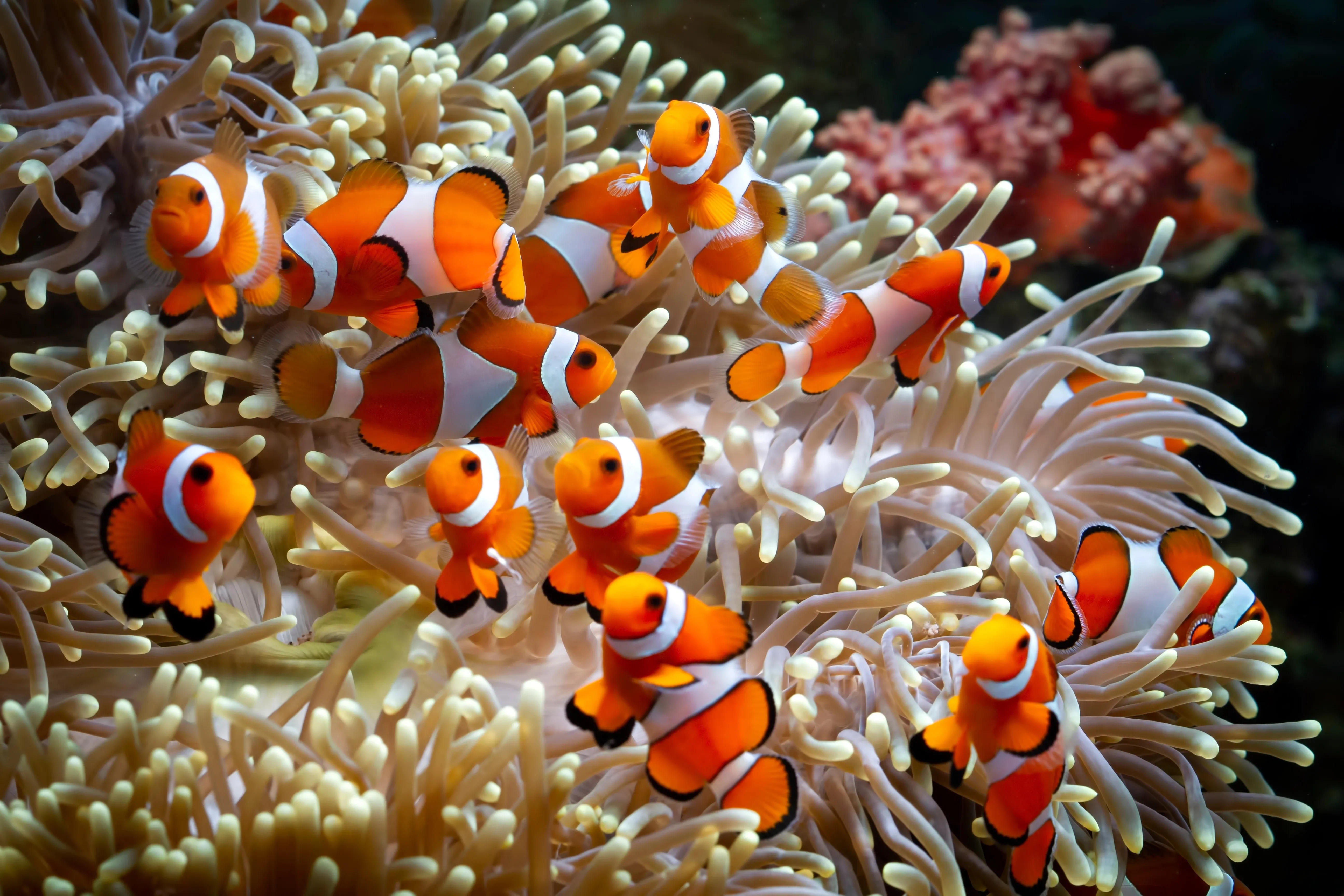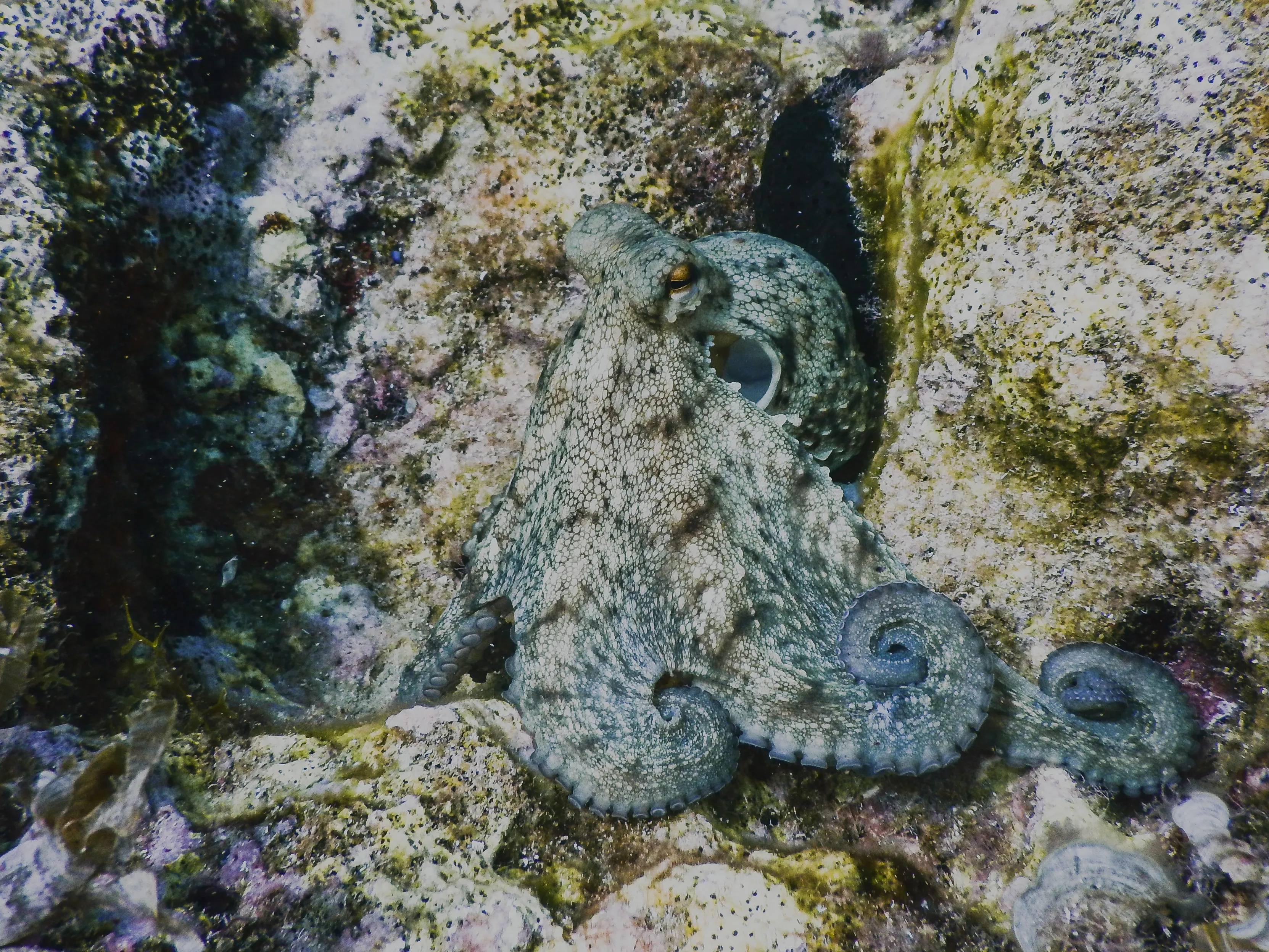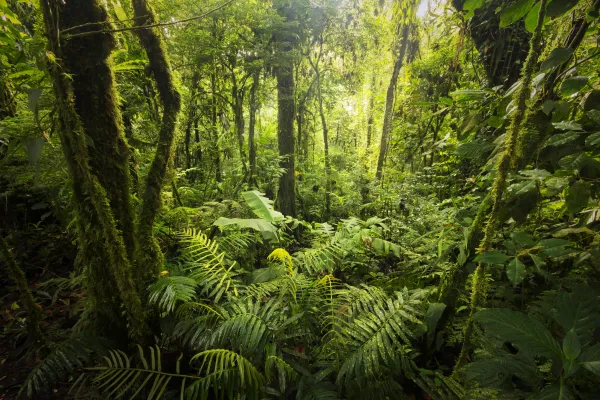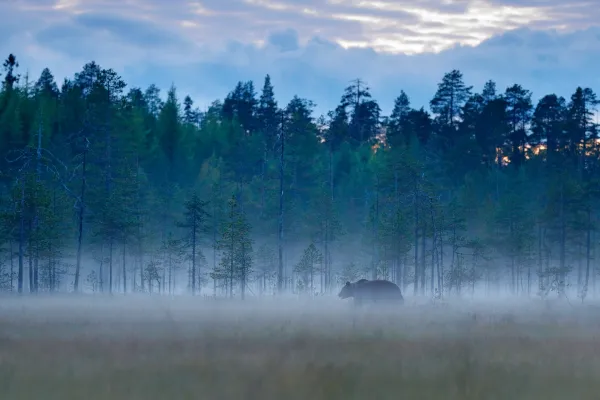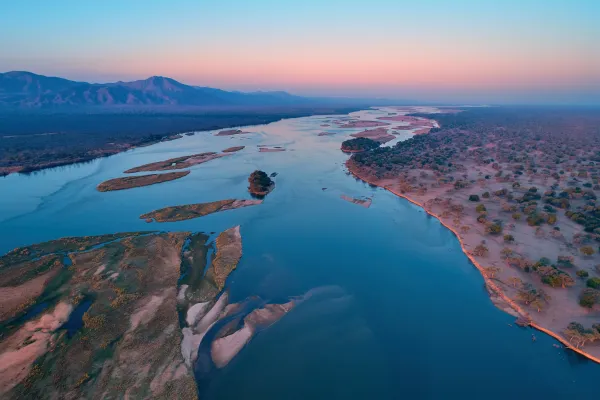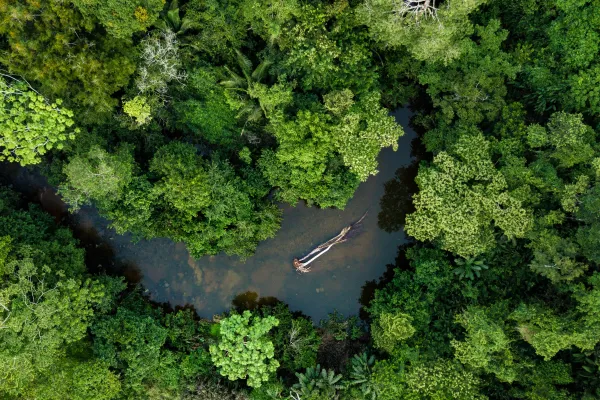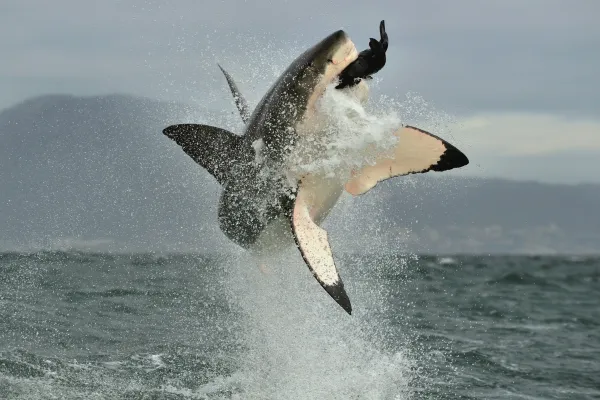Hiding in plain sight - Camouflage of animals
Animals have a host of survival tactics at their disposal. Among the most interesting and invaluable of these is camouflage of animals. It is one of the first lines of animal defence, as well as a brilliant attack mechanism.
Camouflage of animals allows many wildlife species to stay hidden from predators, as well as get closer to prey. There are many forms of animal camouflage, including mimicry - when animals copy others for protection or to attract prey.
However, specific wildlife species rely solely on physical characteristics that evolved over centuries to stay covert in their natural habitats. The following animals are among the world's most skilled masters of disguise - hiding in plain sight.
What animals use camouflage?
Gaboon Viper – Master of background matching
Ironically, some of the most unique and strikingly marked animals are also the most difficult to detect in their natural surroundings. For example, when seen in isolation against a blank background, the Gaboon viper's markings are dramatic. However, when these snakes rest motionless among dry leaves on the forest floor, they are virtually invisible.
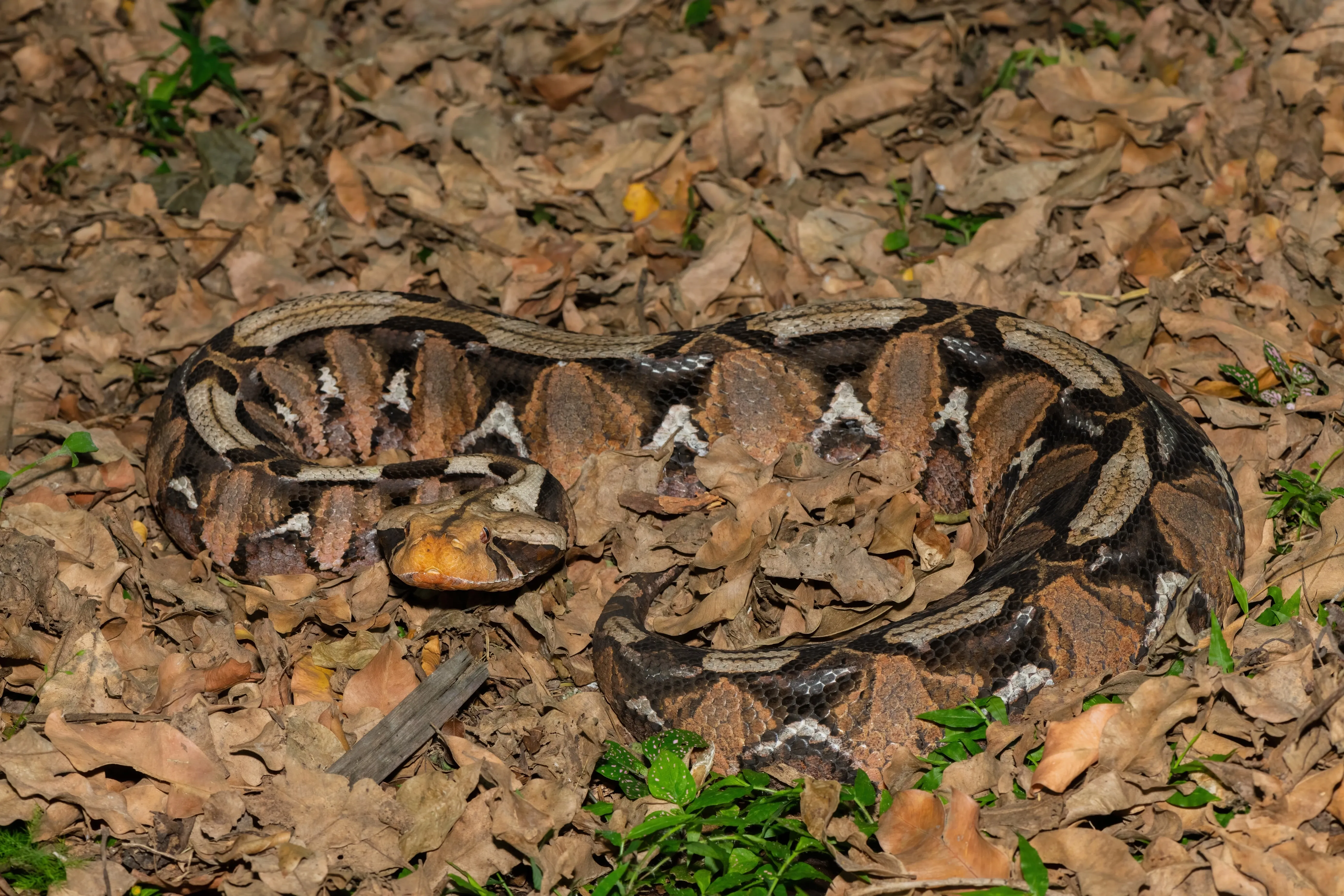
The Gaboon viper is Africa’s largest viper. It is also one of its most formidable venomous snakes. These adders can reach up to 1.8 metres in length and 20 kilograms in weight, while their heads can measure up to 15 centimetres at their widest point.
Furthermore, Gaboon vipers’ fangs can grow to five centimetres, the longest of any toxic African snake species. Consequently, it can inject vast amounts of venom in a single bite. These snakes are notorious for their ability to lie motionless for hours, which is critical to their disguise. However, they move at lightning speed when they do eventually strike.
Zebra – Master of light play
Other animals rely on their predators' shortcomings to remain invisible to them. An example is the zebra is a herbivorous relative of the horse native to Africa. These animals have striking black and white stripes that appear in entirely unique patterns in every individual.
Due to these dramatic markings, zebras stand out clearly to the human eye in an open area. Nevertheless, their stripes blend into the light and shadows when high grasses and bushes surround them.
Consequently, zebras become harder to spot in such environments, even for human beings with our full-range colour vision. However, the zebra’s most significant predator is the lion. Like many other animals, lions have dichromatic vision, which means they only have two cones in their eyes to detect hues, while human beings have three.
Therefore, lions are less sensitive to colour contrasts and have difficulty distinguishing the grazers in overgrown surroundings. Moreover, zebras move in large herds and spend much time feeding quietly close to each other. From the lion’s perspective, zebras en masse are extremely difficult to identify as individual animals.
Chameleon – Master of colour coding
Chameleons are a member of the lizard family and the ultimate terrestrial masters of disguise. These reptiles have the uncanny ability to change their skin colours and patterns at will for various functions. Firstly, they can adjust their body temperature by turning lighter to release heat or darker to absorb warmth.
Chameleons can also change colour to communicate with other chameleons, using vivid hues to warn off rivals or to attract partners. Moreover, they use camouflage to stay elusive from predators and approach potential prey without detection. Chameleons typically feed on insects and worms. However, certain larger species may also eat small birds and rodents.
These lizards can shift shades due to an incredible biological adaptation. They have an upper layer of skin that contains colour pigments, while below this surface flesh lies a complex network of cells. When these animals need to change tones, their brains send messages to these cells to get bigger or smaller. This process releases pigments from different cells so they can fuse to create new skin shades.
However, chameleons do not rely on camouflage techniques alone to achieve their goals. Unlike most creatures, they can rotate their eyes in different directions simultaneously so that each eye has a different view. Therefore, they can look in all directions using their eyes only, without attracting predators’ attention by moving their heads.
Consequently, they can cast one wary eye for predators and hone in on their prey with the other. Masked in their natural invisibility cloaks, these unique lizards move slowly, one step at a time. Their slow mobility is the perfect complement to their camouflage. It allows them to stealthily inch toward their prey while staying out of predators' sights.
Finally, chameleons have extraordinarily long tongues that can reach greater lengths than their bodies and tails combined. These sticky appendages serve as another secret weapon. They allow the lizards to target food from far enough away that they remain undetectable before launching an attack. When they do, it becomes clear that their lethargic motion belies their true abilities. Studies have shown that chameleons can catch up to four flies in three seconds.
Snow Leopard – Master of ghosting
Of all mammals, cats are arguably the most proficient in disguise and are famously tricky to spot in the wild. Their elusiveness comes from a combination of physical characteristics and stealth. For example, many cats can blend perfectly into their surroundings because their colours and markings match their habitat. However, cats are also skilled in the art of moving covertly.
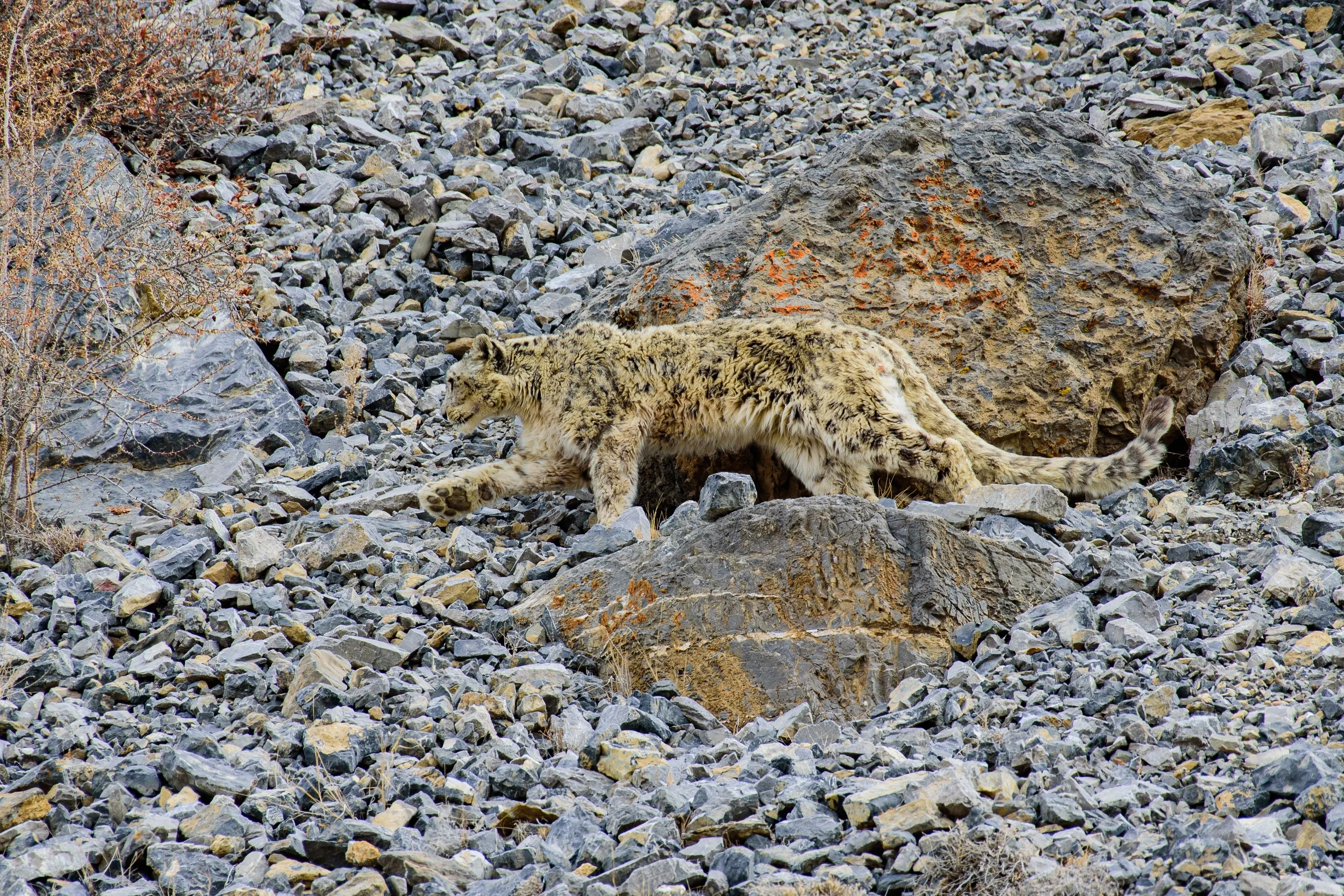
The snow leopard is the master of camouflage among felines. This remarkable animal lives at higher altitudes than any other cat on earth and is notoriously elusive. Consequently, it is dubbed the ‘Ghost of the Mountains’. The snow leopard has a thick, fluffy base coat that shifts from silvery grey in winter to sandy yellow in summer. Moreover, the rosette markings on its fur are equally crucial to the cat's camouflage.
Against a backdrop of rocky mountain peaks and snow-dusted slopes, this cat is almost impossible to detect. When the weather becomes warmer and the ice thaws, snow leopards venture from the mountain peaks to the fertile forests below. They are equally well hidden in these woodlands' dappled sunlight and dark shadows as in the rocky mountain terrain above. Furthermore, the snow leopard's coat reflects bright sunlight, making it tricky to distinguish even in the clear light of day.
Clownfish – Master of toxins
The clownfish is one of the few fish that has been able to use anemones as a camouflage source. Anemones have stinging tentacles that kill many small sea creatures, including many fish species. However, the clownfish has developed a tactic to make it immune to these toxins. They steal a chemical from the anemones and rub it on their bodies, so they do not recognise the clownfish as prey. As a result, they can hide their colourful striped bodies amid the anemone’s toxic tentacles.
However, in a remarkable display of evolutionary progress, various other species, such as the cardinal fish, have also begun to use the same method to outsmart anemones. Consequently, they now vie with clownfish to inhabit the precious pockets of anonymity these potentially poisonous invertebrates offer.
Octopus – Master of innovation
While the chameleon may be the master of land disguise among animals, the octopus is undoubtedly the king of marine camouflage. There are around 300 octopus species worldwide, all of which are among the world's most intelligent invertebrates.
This amazing animal can instantly change its textures, colours, and patterns to match its surroundings. It does so via a combination of specially adapted muscles and a network of pigment cells in its skin. Together, these physical attributes enable the octopus to replicate its immediate environment seamlessly.
Additionally, the octopus has no exoskeleton. Consequently, it can squeeze into small holes, nooks, and crannies to remain further disguised and out of reach of predators. If these tactics cannot protect it from a hunter, the octopus has another trick up its sleeve. It expels a cloud of black ink that muddies the water, disrupting the enemy's vision and scent.
Furthermore, these highly intelligent animals occasionally construct their own makeshift ‘shell armour’ when threatened. In the documentary My Octopus Teacher, the filmmaker records an octopus threatened by a predator retrieving shells and rocks from the ocean floor and wrapping them around herself in defence. This ingenious shield served a double purpose - both hiding and protecting her.
Finally, the ingenious octopus occasionally uses mimicry as a camouflage mechanism. It imitates poisonous animals like the banded sole and the sea krait to warn off predators from approaching them. This marine species uses camouflage in the most diverse and innovative ways of all wildlife.
Sign up for the newsletter
By clicking on “Subscribe now” I will subscribe to the Conscious Explorer newsletter with all the information about mindful travel. Information on the success measurement included in the consent, the use of the shipping service provider MailChimp, logging of the registration and your rights of revocation can be found in our privacy policy.

